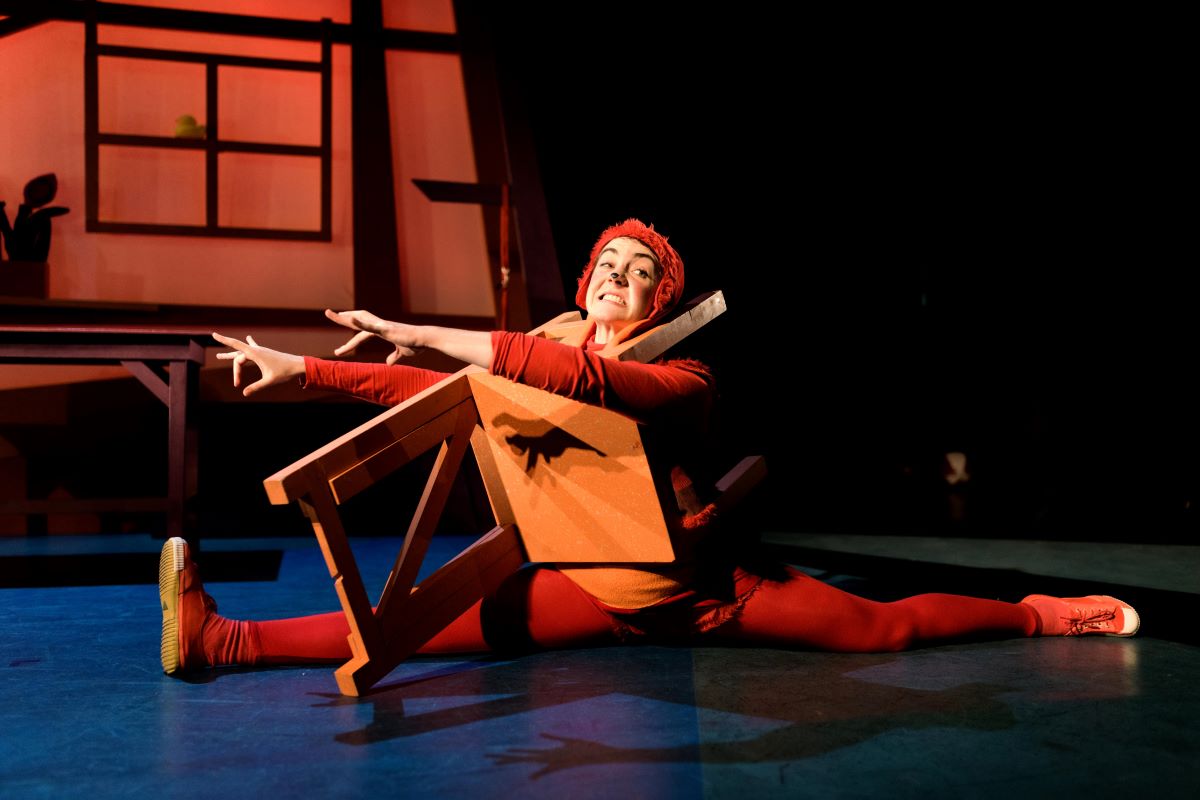
Can't Sit Still's production of Oh No GEORGE!
Photo: Paul Blakemore
Investing in creative ambition
Impact investments aim to support creative ambition and cultural projects to the benefit of society, but Seva Phillips is always amazed and inspired by the creative ways arts organisations use their funding.
Creativity applied to business is the foundation of entrepreneurialism. So it should be no surprise to see innovative business models in an already highly entrepreneurial sector.
Since 2015, Arts & Culture Finance has provided over £10m of repayable finance to the sector across three impact investment funds. During that time, we have amassed many stories of this creative business model innovation in action.
Essentially, the idea is to leverage assets – be they buildings, networks or IP – to generate new income in exciting and different ways. Here are a few examples.
Enabling greater risk taking
Can’t Sit Still (CSS) received £35,000 from our Cultural Impact Development Fund (CIDF) in 2022. Based in South Gloucestershire, CSS produce touring theatre which aims to disrupt social inequalities and connect communities. They perform in unusual locations and work with many groups who may feel the arts are not for them.
Their touring production of the award-winning children’s book Oh No, George! had been cut short by the pandemic, so in spring 2022 CSS wanted to relaunch the tour alongside a new choose-your-own-adventure digital offer.
Based on the previous tour’s success, they wanted to perform in larger venues than before, this time receiving a box office split plus royalties for each show. This meant payment from the box office would only be received after the show, creating a cash deficit in early 2022 due to upfront artist and production costs.
Although riskier, this new financial model offered the potential for significantly higher income. The £35,000 investment offered protection to their cashflow during the tour and a small contingency in the event of lower ticket sales. It meant CSS could take this risk, reach new audiences and potentially generate a new unrestricted income stream to fund their vital work with communities.
 Can’t Sit Still’s Oh No GEORGE! Photo: Paul Blakemore
Can’t Sit Still’s Oh No GEORGE! Photo: Paul Blakemore
Diversifying into digital
In 2017, we worked with Soho Theatre – one of London’s most vibrant venues for new theatre, comedy and cabaret – on a project to produce high quality digital comedy content.
When they approached us, they had already undertaken two years of R&D through a government funded Knowledge Transfer Partnership with the University of Westminster, exploring different business models.
Investment of £300,000 from our Arts Impact Fund enabled them to produce new digital content: a 12-episode run of stand-up comedy. Broadcasting rights were then sold to broadcasters, digital platforms and distributors, providing a vital new source of income for the theatre.
Route to financial independence
Elsewhere, Fuse Art Space boldly capitalised on their creative networks to move towards financial sustainability. This art gallery and performance venue, founded by James Birchall and Sarah Faraday, is based in a converted retail unit on a high street in the centre of Bradford.
Fuse has hosted a range of exhibitions, live performances and arts events with a focus on pioneering, experimental and socially-engaged art and music. It supports many emerging local artists and has also managed to get some of Bradford’s most vulnerable citizens through its doors. In 2016 its Sanctuary Events project engaged over 250 asylum-seekers and refugees, helping them to feel included in the city’s cultural life and community.
Fuse were looking for ways to become financially independent. Their space was small and local council funding had recently been withdrawn. Aware that funding opportunities in Bradford were scarce, Fuse looked to create a commercial enterprise elsewhere, using the new revenues to support artistic and community engagement back in Bradford.
They came to the Arts Impact Fund (AIF) looking for £150,000 to help set up CAMP, an arts facility in the French Pyrenees offering residential courses led by world-renowned practitioners. A loan enabled them to purchase and refurbish the site for CAMP, which is now up and running in Aulus, near Toulouse.
Participants can join courses led by artists including composers Gavin Bryars and Terry Riley, and Turner Prize winner Laure Prouvost. “What we’ve done would be impossible without the AIF”, says James Birchall. “Without collateral, without independent wealth or assets to back the project, AIF gave us a shot we wouldn’t otherwise have had.”
Creativity in common
We work with organisations to test out their financial and business models. And we work collaboratively to see how projects will be managed, and to understand and validate assumptions behind revenue projections. And we always look at impact because it’s important the projects we fund have a clear social purpose.
For Fuse, it was important that the work of CAMP also supported in-need communities in Bradford. For CSS, their new business model would mean increased funding for their vital arts programme with hard-to-reach audiences. Income from Soho Theatre’s mainstream programme subsidises youth theatre and more risk-taking theatrical work. Through their loan, they were able to make great work and reach new audiences outside London, at the same time as making a measurable impact, creating new touring opportunities and increased exposure for artists.
There is no such thing as a typical investment, but all these projects have creativity in common. These arts organisations have been able to draw on their creative resources to think of new ways forward, to take risks and ultimately become more sustainable which boosts their ability to make a real difference to people’s lives.
Seva Phillips is Head of Arts & Culture Finance at Nesta.
![]() artsculturefinance.org
artsculturefinance.org
![]() @artsculturefin
@artsculturefin
This article, sponsored and contributed by Arts & Culture Finance, is one of series demonstrating the impact repayable finance can make to the arts, culture and heritage sector.
Join the Discussion
You must be logged in to post a comment.